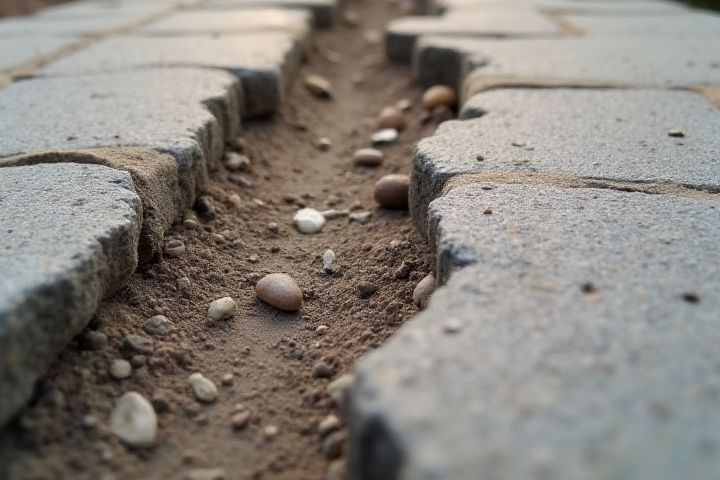
House foundations can indeed crack due to a variety of factors. Settlement issues often occur when soil shifts beneath the foundation, leading to structural stress that causes cracks. Environmental conditions, such as excessive rainfall or drought, can also influence soil moisture levels, contributing to foundation problems. Poor drainage systems may exacerbate these issues by allowing water to pool around the foundation, increasing the risk of damage. Regular inspections and timely repairs can help maintain the integrity of your foundation and prevent more severe structural issues.
Can House Foundation Crack
Causes of Cracks
House foundation cracks can arise from various factors, including soil settlement, moisture fluctuations, and temperature changes. Poor drainage systems may cause water to accumulate around the foundation, leading to hydrostatic pressure that exacerbates cracking. Tree roots can also create instability by exerting pressure on the foundation as they grow. Inadequate construction practices, such as using substandard materials or incorrect reinforcement, can further contribute to the development of these structural issues.
Types of Cracks
House foundation cracks can manifest in several types, each indicating different underlying issues. Vertical cracks often suggest settling, which is typically not a significant concern if they remain small. Horizontal cracks may point to excessive pressure from soil expansion or water accumulation, requiring immediate attention to prevent further damage. Diagonal cracks, frequently associated with structural movement, can indicate serious foundation problems and should be inspected by a professional for remediation.
Impact on Structural Integrity
House foundation cracks can significantly compromise structural integrity, leading to potential safety hazards. Over 90% of foundation issues stem from soil movement, which can cause misalignment and stress on walls and framing. For instance, a crack wider than 1/4 inch may indicate serious problems that require immediate assessment by a structural engineer. Timely intervention can prevent costly repairs that can escalate into tens of thousands of dollars if left unaddressed.
Warning Signs
Cracks in house foundations can indicate serious structural issues, so it's crucial to recognize the warning signs early. Vertical cracks that are wider than 1/4 inch may suggest significant settling or shifting of the foundation, while horizontal cracks often signal pressure from the soil surrounding the foundation. If you notice doors or windows that stick or don't close properly, this may also indicate a foundation problem linked to an uneven surface. Regular inspections of your foundation can help prevent costly repairs, ensuring the stability and safety of your home.
Foundation Settlement
Foundation settlement often leads to visible cracks in a house's foundation, which can range in size and severity. Typically, vertical cracks that are less than 1/8 inch wide are considered normal, while wider cracks may indicate significant settlement issues. Factors such as soil composition, moisture levels, and improper drainage can exacerbate settlement problems, potentially resulting in costly repairs that average between $2,000 to $7,000. Regular inspections and timely repairs are crucial to maintaining the structural integrity of your home and preventing more severe damage down the line.
Soil Movement
House foundation cracks often result from soil movement, which can be attributed to various factors such as moisture fluctuations, expansive clay soils, and tree root growth. For instance, a 10% increase in soil moisture can lead to significant swelling in clay, potentially exerting enough pressure to crack a concrete foundation. In areas with heavy clay, approximately 25% of homes experience some form of foundation issue due to soil shrink-swell behavior. It's essential for homeowners to monitor soil conditions and implement proper drainage systems to minimize foundation risks.
Water Damage
A cracked house foundation can lead to significant water damage, compromising structural integrity and indoor air quality. When cracks form, water can seep through, resulting in dampness and mold growth, which affects your home's environment. The cost to repair foundation issues can range from $2,000 to $30,000, depending on severity and repair methods. Regular inspections and maintenance can help identify potential cracks early, preventing costly damages and ensuring safety for you and your family.
Repair Options
House foundation cracks can lead to significant structural issues if not addressed promptly. Repair options depend on the severity and type of crack, ranging from epoxy injections for small fractures to underpinning for more extensive damage. You can also consider polyurethane foams for waterproofing and stabilizing soil around the foundation. Regular inspection and timely repairs are essential to maintaining your property's integrity and longevity.
Cost Implications
Cracks in a house foundation can lead to significant cost implications, ranging from $2,000 to $30,000 for repairs, depending on severity and underlying causes. Professional assessments may cost between $500 and $1,500, ensuring a thorough inspection of structural integrity. In some cases, neglected cracks can result in further issues, such as water damage or mold, potentially increasing repair costs by up to 50%. Investing in preventive measures, such as proper drainage systems, can save you thousands in the long run and maintain your home's value.
Professional Assessment
A cracked house foundation requires immediate professional assessment to determine the extent of the damage and the underlying causes. Engineers or certified inspectors typically evaluate the foundation for structural integrity, identifying issues such as soil movement, water damage, or poor drainage systems. You may need to consider remediation options, ranging from minor repairs to extensive reinforcement strategies. Addressing foundation issues promptly can prevent further damage and maintain the overall value of your property.
